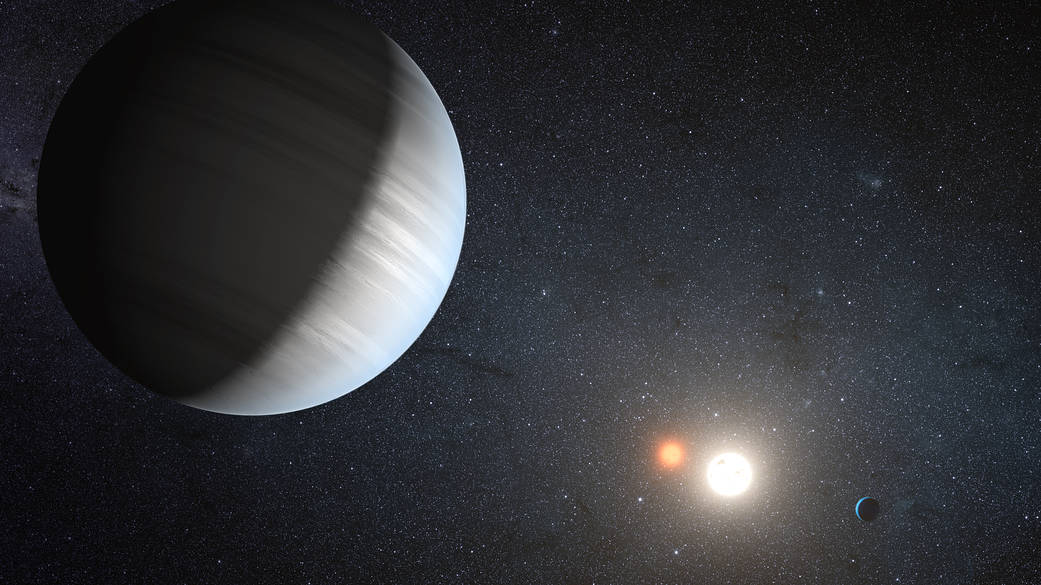
This artist’s concept illustrates Kepler-47, the first transiting circumbinary system – multiple planets orbiting two suns – 4,900 light-years from Earth, in the constellation Cygnus. The system was detected by NASA’s Kepler space telescope, which measures minisucule changes in the brightness of more than 150,000 stars to search for planets that pass in front of or ‘transit’ their host star.
As seen from our vantage point on Earth, the two orbiting stars regularly eclipse each other every 7.5 days. One star is similar to the sun in size, but only 84 percent as bright. The second star is diminutive, measuring only one-third the size of the sun and less than one percent as bright.
Two planets also eclipse, or transit, the host stars. The inner planet, Kepler-47b, orbits the pair of stars in less than 50 days. At three times the radius of Earth, it is the smallest known transiting circumbinary planet.
Seen in the foreground, the outer planet, Kepler-47c, orbits its host pair every 303 days, placing it in the so-called “habitable zone,” the region in a planetary system where liquid water might exist on the surface of a planet. While not a world hospitable for life, Kepler-47c is thought to be a gaseous giant, slightly larger than Neptune, where an atmosphere of thick bright water-vapor clouds might exist.
For more, visit: https://www.nasa.gov/mission_pages/kepler/news/kepler-47.htmlImage credit: NASA Ames/JPL-Caltech/T. Pyle























